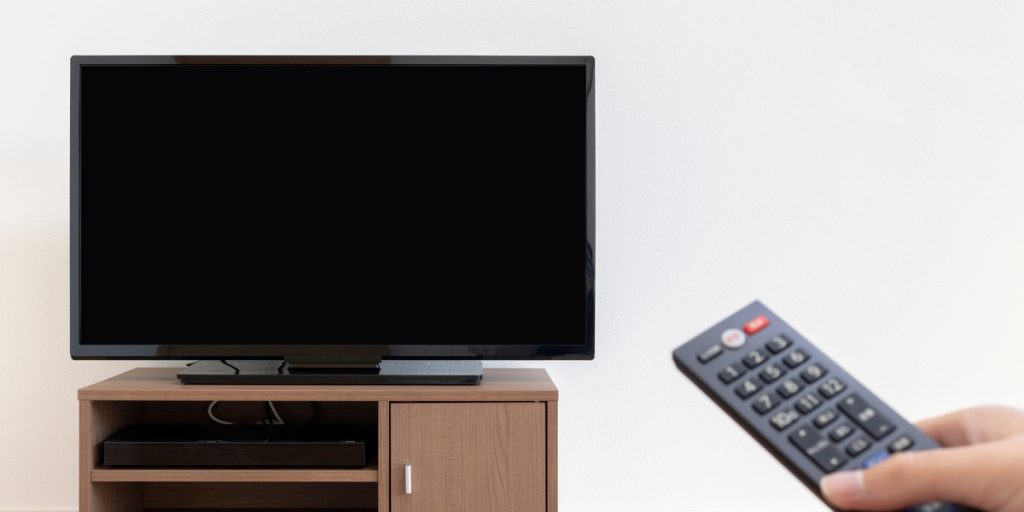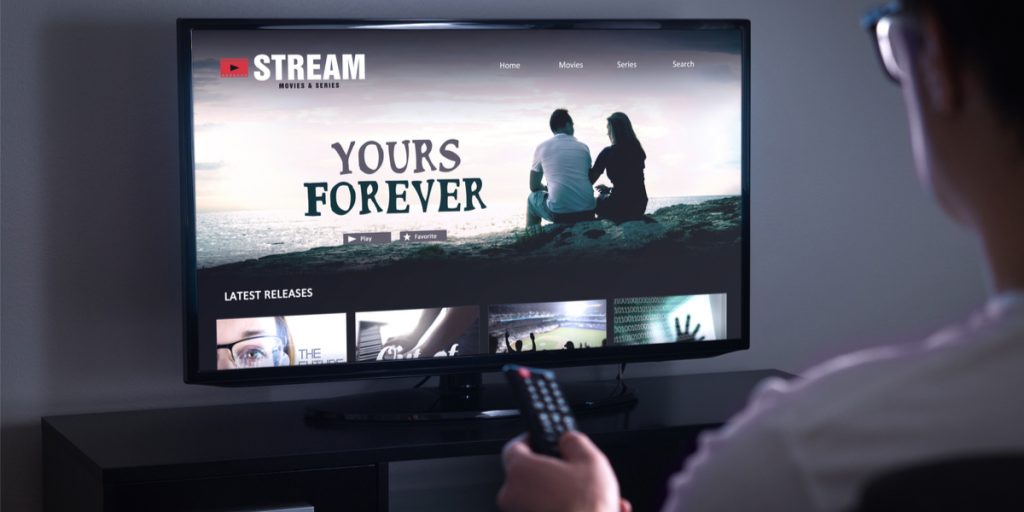Radiation is a scary word. We know it can do bad things, and if you watched the HBO special “Chernobyl,” that fear was reinforced thoroughly.
What is even scarier is that you don’t need a nuclear power plant to make radiation. It exists in our own homes. In fact, even a TV produces some. The same process that turns electricity in your wall into moving pictures with sound involves the production of electric and magnetic fields, or EMF. When those fields move (such as when the picture changes), they can be more accurately described as electromagnetic radiation.
Before we go down the rabbit hole of nightmare fuel, it’s important to understand that not all radiation is the same, and it takes a surprising amount to be immediately dangerous.
Your TV is absolutely not a mini Chernobyl in your living room or bedroom. Still, if you like the idea of having a little more control over how much radiation hits your body, you need to know more about the radiation produced by objects like television.
The WHO has a great article to help with that, but it fails to cover an important concept.
Some devices will produce EMFs even when they’re turned off. Is your TV among them?
Do Televisions Emit EMFs When Off?

There is a short answer to this question, but it isn’t very satisfying. In short, TVs sometimes emit EMFs when they’re turned off, but how much can vary a lot.
The reason for the vague answer is that there are a lot of different types of TVs out there. It’s best to break things down a little further and understand each way a television might still emit radiation when it’s off.
Trickle Charge
The first is a concept commonly referred to as trickle charge.
Modern electric devices have components called capacitors. They’re kind of like batteries, but a little simpler.
The idea is that a capacitor can hold a charge of electricity for a short amount of time, and almost every single electric device you might own uses them to stabilize power.
The electricity flowing from the wall isn’t always consistent, so the capacitors step in and even out the flow.
Why does this matter for a TV that is turned off?
Well, capacitors continuously draw and release power.
So, if your TV is plugged in, the capacitors will cause it to draw a little bit of electricity, even when it’s turned off.
This is why your power company might recommend unplugging devices you aren’t using to lower your electric bill.
As for EMFs, any time electricity moves, you get some amount of EMF. The trickle charge in a TV doesn’t produce a lot of EMF, but it is more than zero.
Always in Use
Aside from trickle charges, new TVs have a lot of functions they can go through even when the screen is off.
They might record a show for you or run an update when not in use.
This is designed to make things convenient, but all of these functions use electricity. And, as you already know, any time electricity is used, there are at least some EMFs produced.
So, the longer answer is, a plugged-in TV will produce some EMFs even when it’s off.
The amount depends on the design of the TV, and to better understand that, we should discuss smart TVs.
Smart TVs and Wi-Fi

Trickle charge aside (which still applies to smart TVs), smart televisions have additional functions that use more power than less-smart TVs.
For starters, they provide options for automatic programming.
You can schedule a TV to turn on for your favorite shows. You can set it to record stuff while you aren’t in front of it. It can run updates.
There’s a long list.
As you just read, all of these things will contribute to EMF emission.
The good news is that none of these events produce nearly as much EMF as actively watching the TV.
There is an exception to the rule: Wi-Fi.
Wi-Fi is a process that deliberately creates EMF in order to communicate with other devices.
Because of this, EMF saturation of Wi-Fi is going to be higher than most of your other television’s functions.
Perhaps more important, Wi-Fi operations can and do run while the television is turned off.
Those updates require an internet connection.
In fact, simply keeping the clock accurate when the TV is sleeping involves Wi-Fi.
As was already mentioned, Wi-Fi in this state is still less total EMF emission than when the TV is on (since it uses Wi-Fi then too, plus the actual TV watching), but these ‘smart’ features are something to keep in mind.
Wi fi or any wireless system radiate EMF. So there’s a safe distance to maintain from a router to get least exposure.
Ways to Eliminate Television Radiation
The good news is EMF emissions from your TV are relatively small compared to other sources.
It’s not necessarily something that should make you lose sleep, but if you like to err on the side of caution (which is a pretty reasonable stance), then minimizing EMF exposure is not a bad idea.
In fact, that’s the first lesson taught in formal radiation safety training.
Minimizing exposure is always the goal. With that, there are some tips and tricks that can give you more direct control over your total exposure.
Unplug the TV
This is the ultimate answer.
If the TV doesn’t have access to electricity, it can’t produce EMFs.
As a bonus, you spend a little less money on your electricity bill too.
If the idea of actively plugging and unplugging the TV feels like a hassle, put it into a power strip.
Then, you only have to flick a switch, and it’s worth emphasizing that the power strip will not pull a trickle charge when it’s switched off. Neither will anything connected to it.
I have this one from Amazon. It’s nice to have the “always on” option but the TV is cut off completely when I push the button “off.”
That said, an unplugged TV loses all of those smart features. If you want the best of both worlds, you still have some options.
Disable Wi-Fi
We already covered that Wi-Fi is a leading source of EMF.
With most smart TVs, you can disable it.
This has part of the drawback of unplugging, but it’s less extreme. You can still get some smart functions without Wi-Fi, and you can always turn it on when you want to use the internet features.
Use a Faraday Cage
A Faraday cage is a fancy name for an EMF shield.
In the interest of skipping a few college courses’ worth of physics, you can create an EMF shield with a conductive material.
Basically, putting a metal box around the TV will block the EMF and keep it from getting near you.
Faraday cages come in a lot of different forms, and they aren’t all equal.
A perfect cage would have to be a highly conductive metal with absolutely no gaps.
It isn’t very practical.
Instead, you can get professionally made cages.
Usually, they’ll involve a frame of metal wires.
Some companies even make fabric shields (with conductive material mixed in) that are soft, pliable and easy to throw over the TV.
If you’re feeling industrious, you can DIY a cage for your TV.
If you stick to light materials, you can make it easy to apply and remove the cage at will.
There is one important thing to keep in mind.
A cage that is good at shielding EMF is also good at blocking Wi-Fi (since Wi-Fi works through EMF).
A good shield might disable some of those behind-the-scenes functions that you like.
A lesser shield will still allow Wi-Fi but slow it down.
It’s a give and take relationship.
Increase Distance
The final trick is the simplest, but in many cases, it’s the most pragmatic.
EMFs dissipate very quickly as they travel across distances. They follow what is known as an inverse square law.
Simply put, that means every time you double the distance between you and your TV, you cut the amount of radiation that can reach you into a fourth.
So, if you were receiving 2 𝜇T at one foot away, you would only receive 0.5 𝜇T at two feet away. It’s a fast drop off.
Any time you can reasonably increase the distance between you and the television, it’s going to dramatically reduce your overall exposure.
Multiply that by the sheer amount of time you spend around a television (whether on or off), and it adds up pretty quickly.
Wrapping it Up
If you worry about EMFs, your television likely isn’t the first place to start cutting exposure.
That said, it’s always important to understand the nature of things around you, and if you’re being diligent, the TV will eventually need your scrutiny.
Now, you’re empowered with the knowledge to decide just how much EMF you’re willing to take from your television, and you have reliable ways to control your own exposure.
Read next: Tablet Radiation Levels of Popular Models


